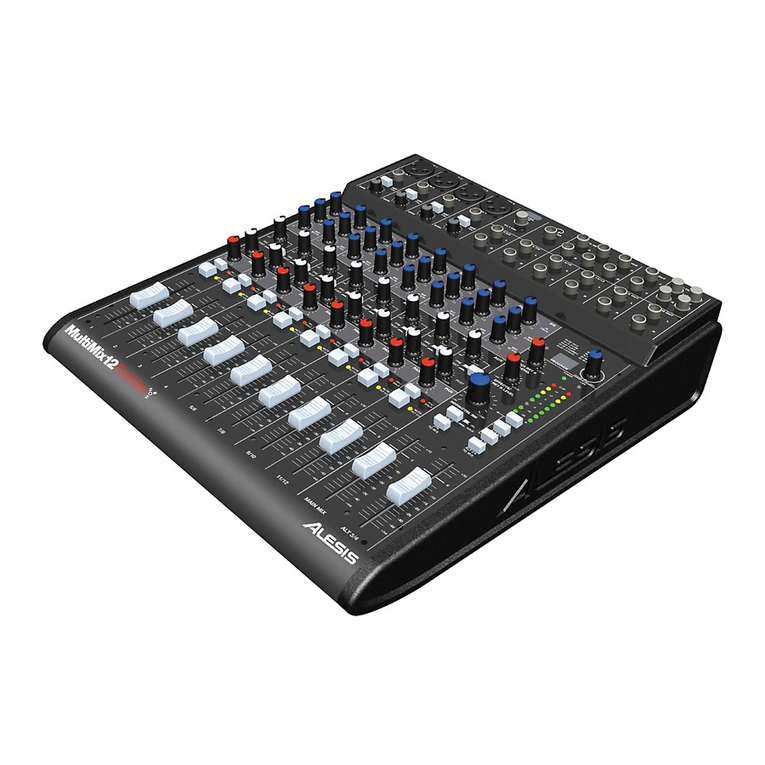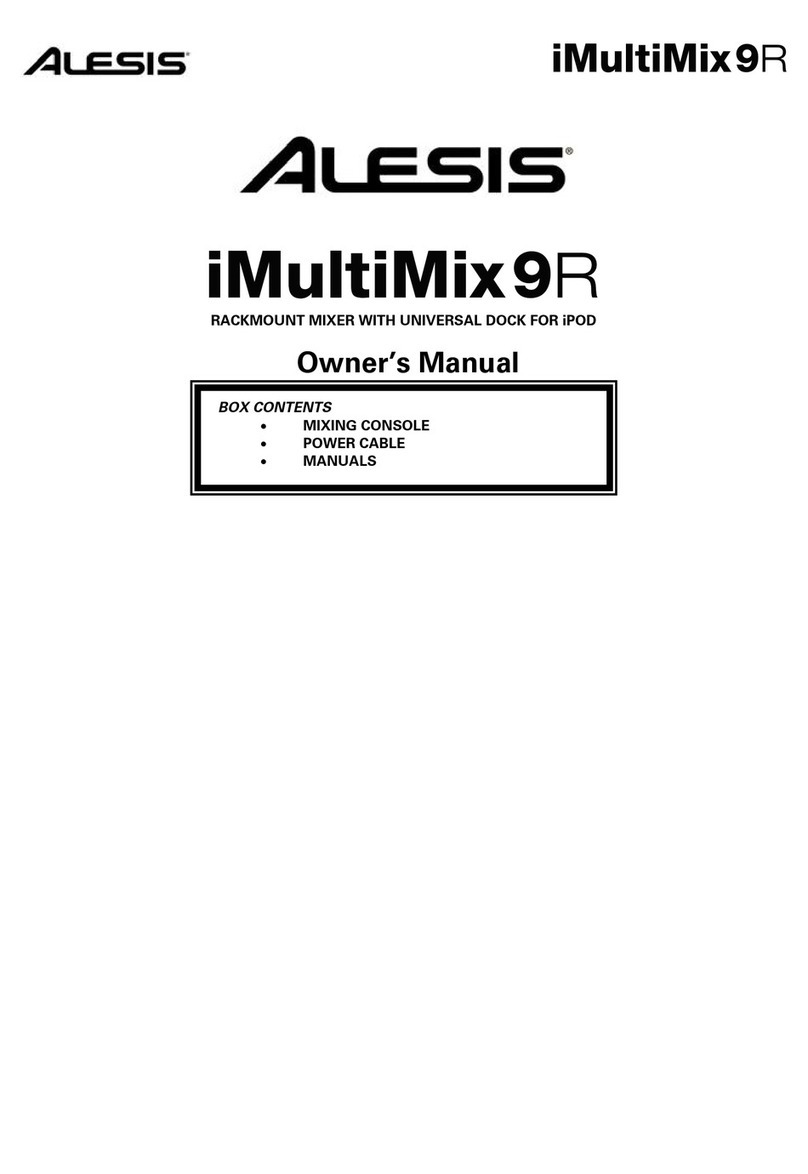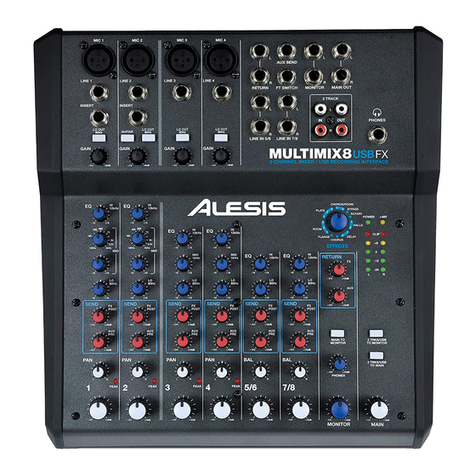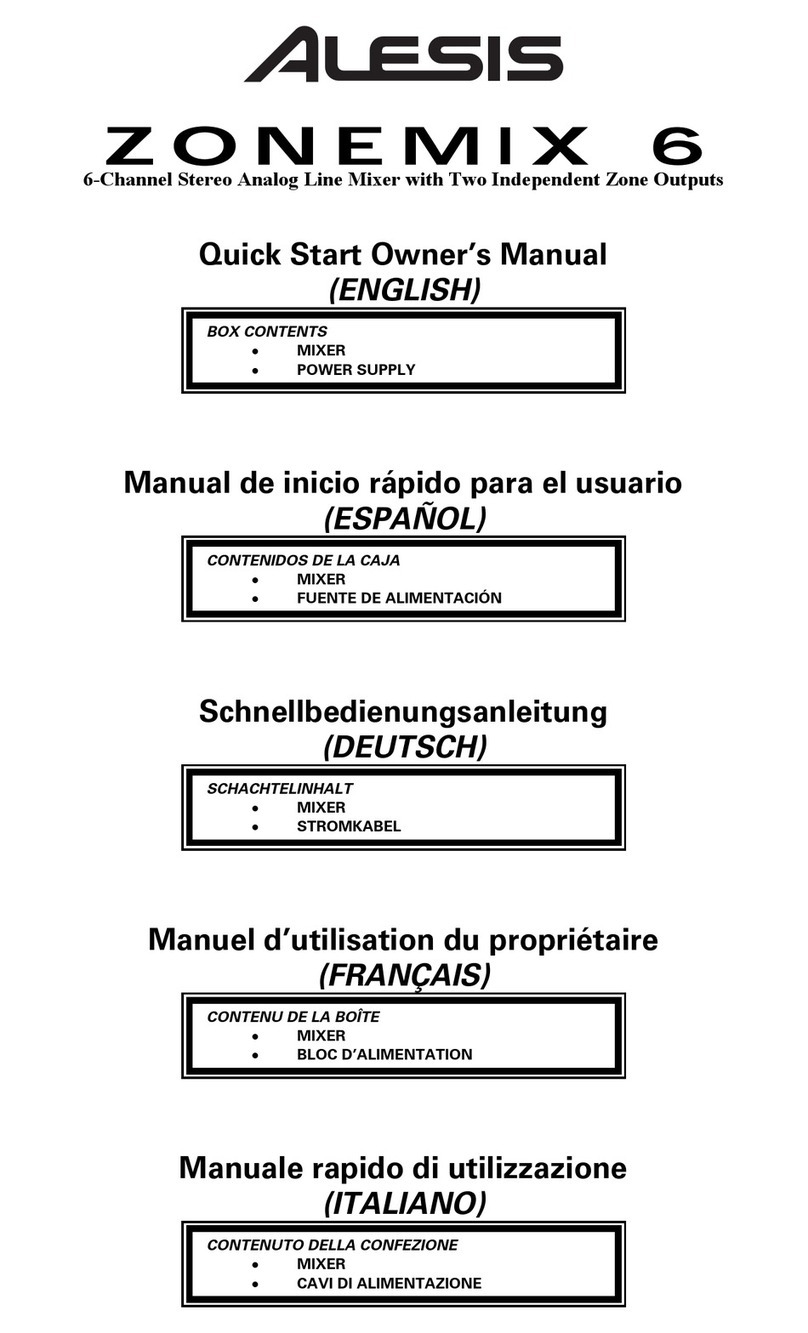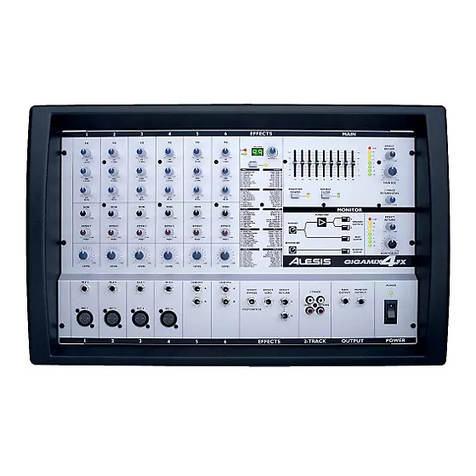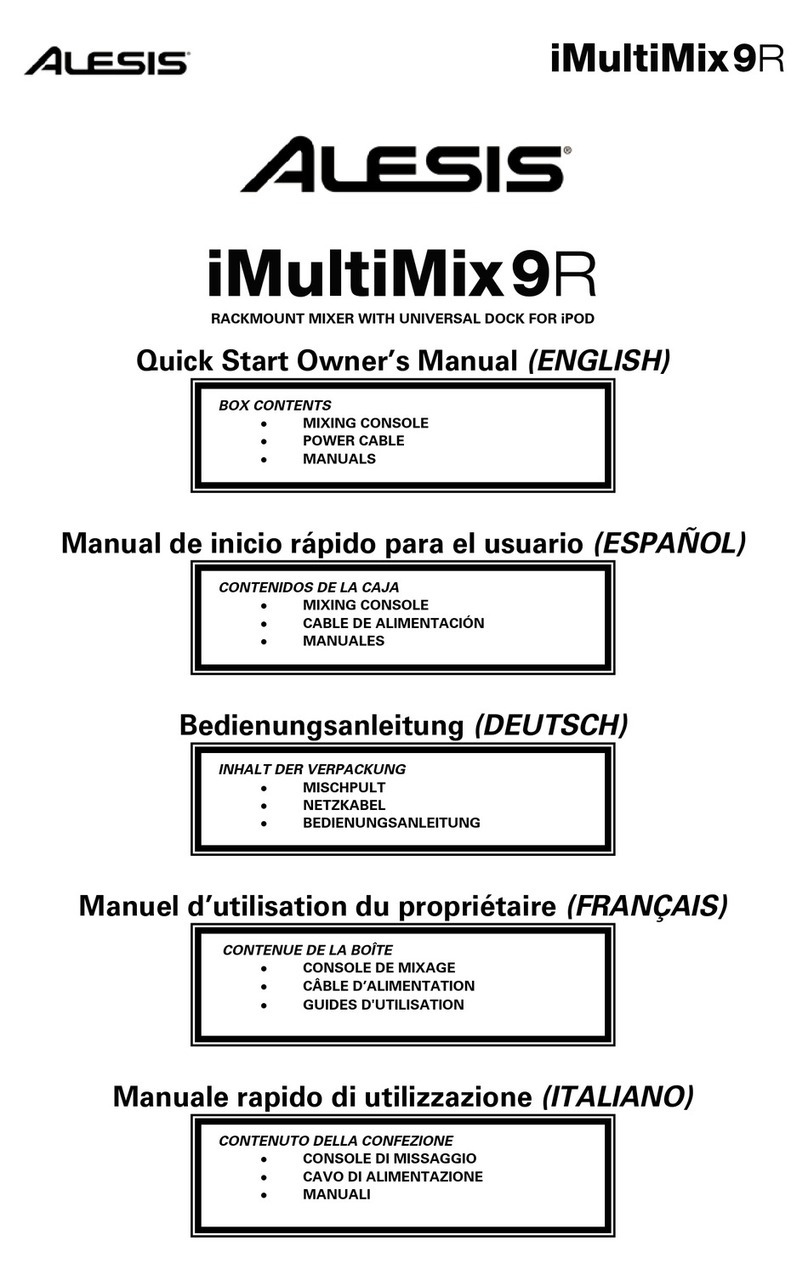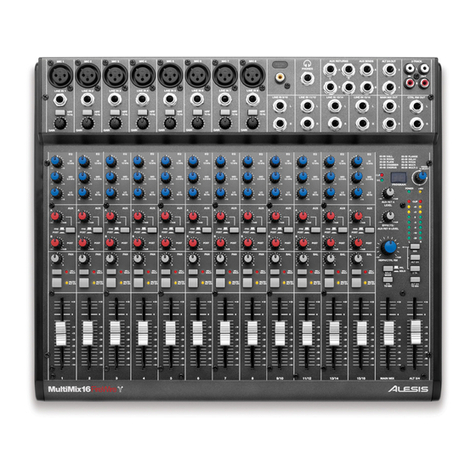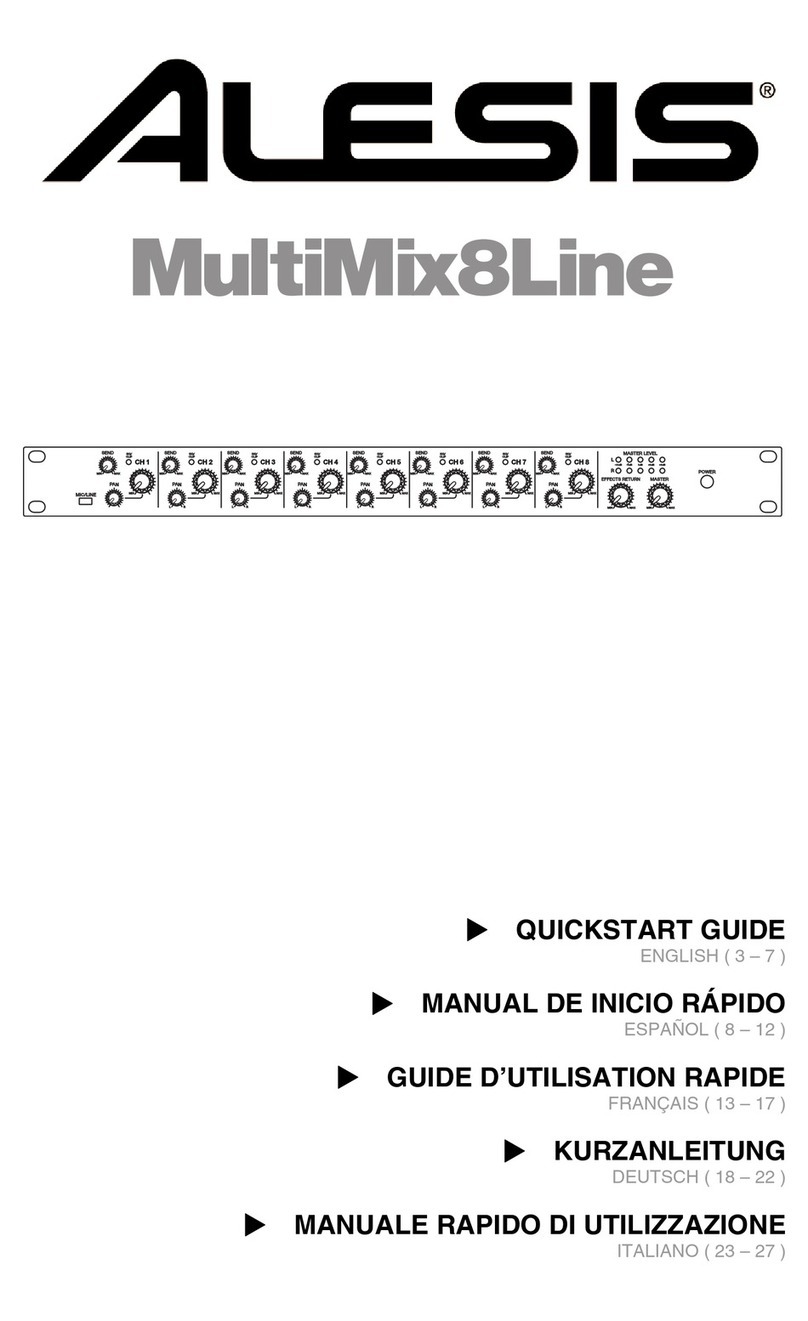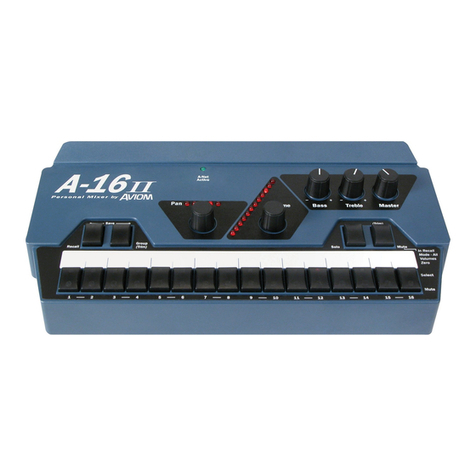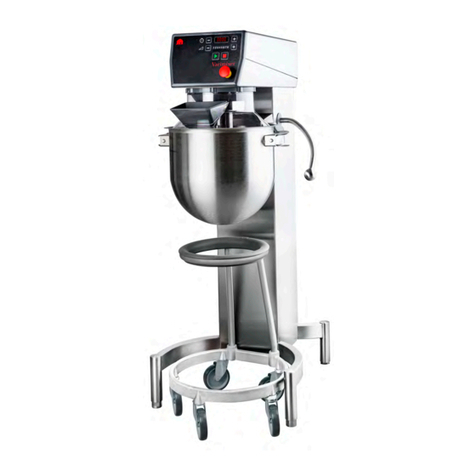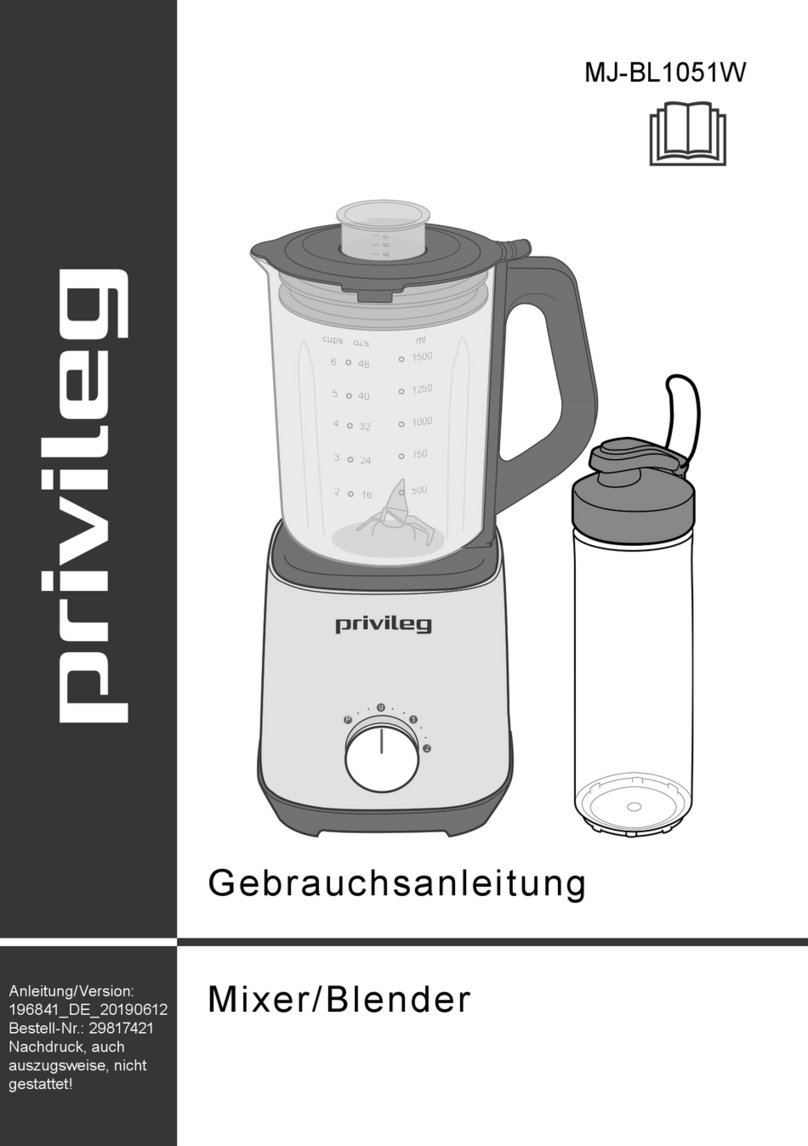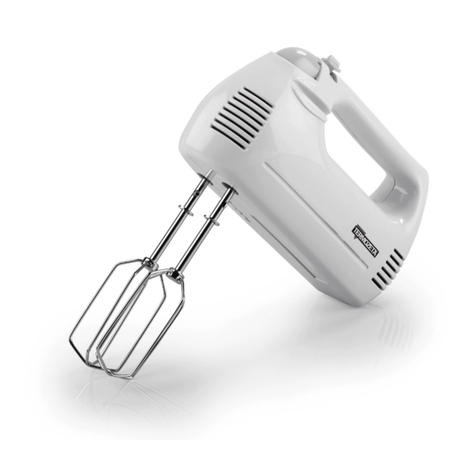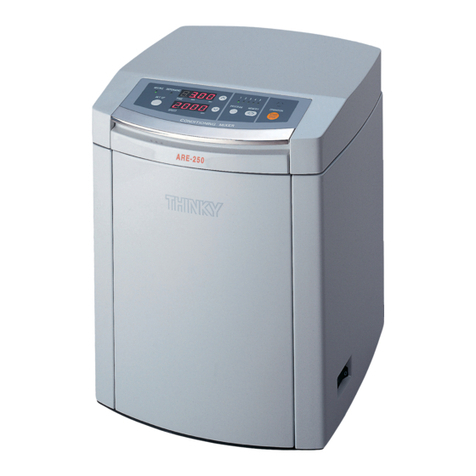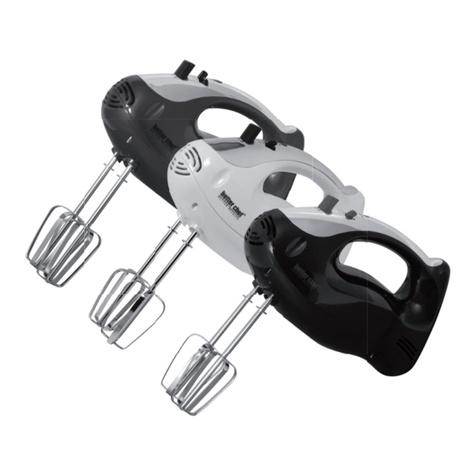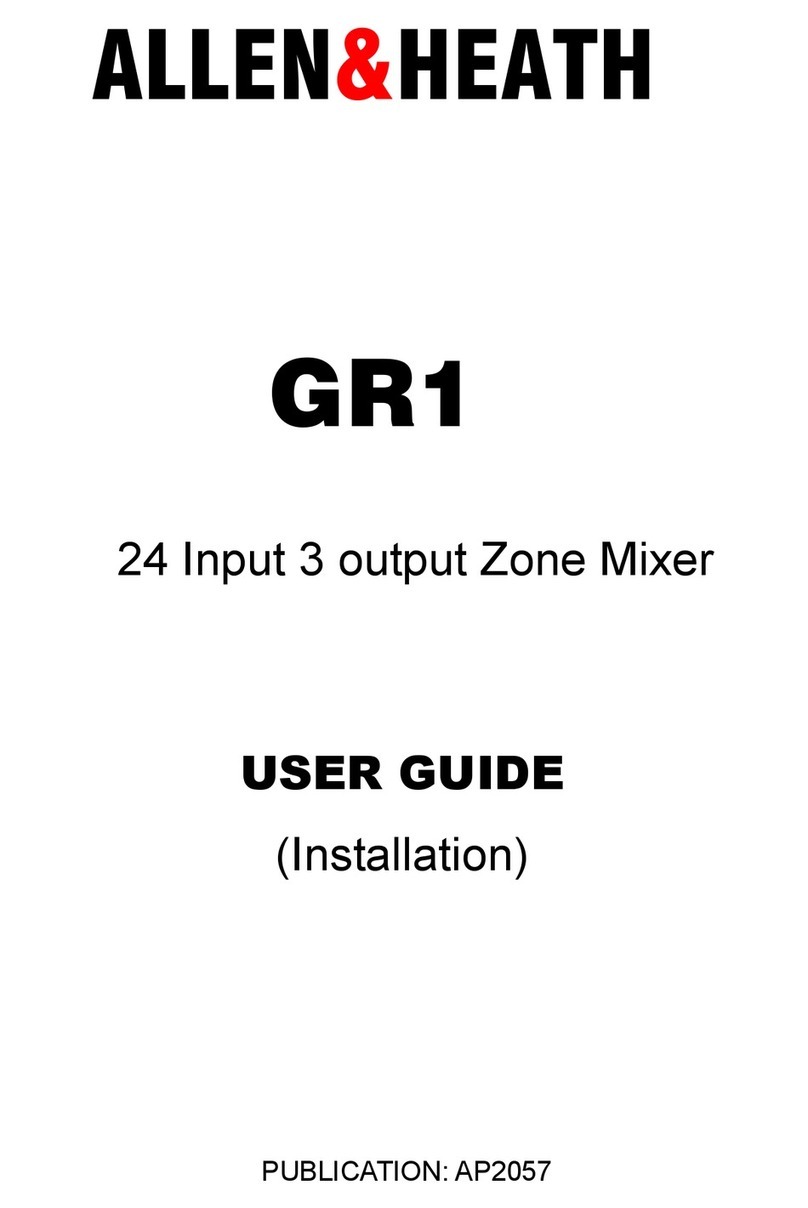1
GIGAMIX 4CD OWNER’S MANUAL
Before making any power connections, make sure the GigaMix’s power switch is turned off.
• Plug the female end of the power cable into the GigaMix’s power socket.
• Plug the male (plug) end into a properly grounded power outlet.
Making Audio Connections
Start by making sure the GigaMix’s power switch is turned off. Then use either 1/4” or XLR
cables to connect your instruments and microphones to the GigaMix. After this, you may
connect speakers to the GigaMix. There are several ways to do this:
• Main (house) speakers. Connect two cables from the GigaMix’s two rear outputs to a
matched set of speakers. For optimal power output, the total rated load of the speakers
attached to these outputs should be 4 ohms.
Note: You may daisy-chain several speakers, if necessary, as long as the total rated load of
the speakers attached to this output is no lower than 4 ohms.
Note: the front panel Main Output jack is not powered. It may be used to run the Main
mix into another mixer for recording purposes.
• Unpowered monitors. If you want to use an external amplifier to power your monitors,
connect a cable from the GigaMix’s front-panel Monitor Output jack to a high-quality
amplifier. Then connect the output of that amplifier to one or more monitor speakers
according to the instructions in the amplifier’s manual.
Connecting a Tape Player
To connect a tape player or other device, plug the left and right audio outputs of your source
device into the 2-Track Return jacks. Control the level of the music with the 2-
TRACK/CD LEVEL knob in the Main section.
Note: Plugging cables into the 2-Track Return jacks will disable the built-in CD Player.
To capture the performance on a recording device, connect two cables from the 2-Track
Send jacks to the audio inputs of the destination device. Adjust the recording level using the
destination device’s input controls.
Connecting External Effects
To use an external effects device such as a reverb or chorus, connect an audio cable from
the Effects Send jack of the GigaMix to the input of the external effects device. Then run
an audio cable from the output of the effects device to one of the Effect Return input jacks
on the GigaMix. If your external effects device has stereo outputs, use two cables to connect
the left and right outputs of that device to the Effect Return jacks on the GigaMix.
The level sent to the external device is controlled by each channel’s EFFECT knob. The
amount of external effect coming back to the GigaMix is controlled by a combination of the
controls on the external effects device and the EFFECT RETURN controls for the Main
and Monitor sections of the GigaMix.
Note: Plugging a cable into the Effect Send jack will disable the built-in digital effects of the
GigaMix.
